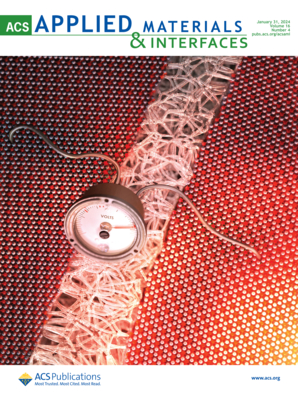MnCo2O4 as a Photothermal Modifier for BiVO4 Photoanode to Achieve Efficient Photoelectrochemical Water Oxidation
IF 8.3
2区 材料科学
Q1 MATERIALS SCIENCE, MULTIDISCIPLINARY
引用次数: 0
Abstract
Spinel oxides are widely used to enhance photoanodes’ photoelectrochemical (PEC) water oxidation performance. In this paper, we demonstrate that a p-type photothermal MnCo2O4 layer, inserted between BiVO4 and FeOOH cocatalysts, can significantly enhance PEC performance. On the one hand, the charge recombination is greatly suppressed since p-type MnCo2O4 can form a p–n heterojunction with n-type BiVO4. On the other hand, upon near-infrared (NIR) light irradiation, the deposited MnCo2O4 shows excellent photothermal conversion performance that can further facilitate charge transfer and accelerate the water oxidation process by elevating the operating temperature. In addition, the FeOOH cocatalyst is introduced to fully utilize the holes reaching the surface and further enhance the surface oxygen evolution kinetics. Consequently, the carefully constructed BiVO4/MnCo2O4/FeOOH photoanode shows excellent photocurrent (4.71 mA cm–2) at 1.23 V vs RHE (VRHE) and superior applied bias photon-to-current efficiency (1.62%) at 0.6 VRHE. The photocurrent density maintains more than 90% of the initial photocurrent after 4 h of combined solar and NIR light irradiation. Enhancing the PEC catalytic activity of photoelectrodes using photothermal materials is a simple and effective strategy, which can be used to explore PEC activity enhancement in other photoelectrodes.

求助全文
约1分钟内获得全文
求助全文
来源期刊

ACS Applied Materials & Interfaces
工程技术-材料科学:综合
CiteScore
16.00
自引率
6.30%
发文量
4978
审稿时长
1.8 months
期刊介绍:
ACS Applied Materials & Interfaces is a leading interdisciplinary journal that brings together chemists, engineers, physicists, and biologists to explore the development and utilization of newly-discovered materials and interfacial processes for specific applications. Our journal has experienced remarkable growth since its establishment in 2009, both in terms of the number of articles published and the impact of the research showcased. We are proud to foster a truly global community, with the majority of published articles originating from outside the United States, reflecting the rapid growth of applied research worldwide.
 求助内容:
求助内容: 应助结果提醒方式:
应助结果提醒方式:


